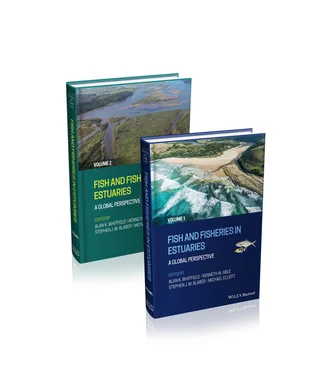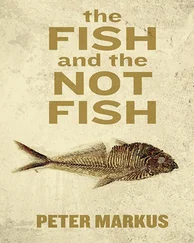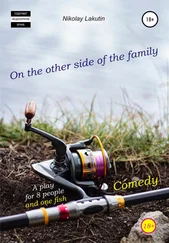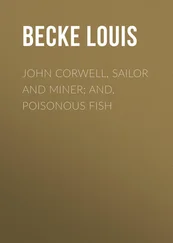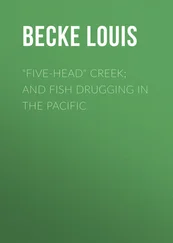Although most MEO taxa use estuaries opportunistically, some marine species are dependent on estuaries during their juvenile stages and are therefore not using estuaries opportunistically. Ray (2005) emphasises the need to determine which fishes ‘must’ use estuaries (i.e. obligate dependents), and which therefore will be at risk if estuarine habitats are lost, from those which ‘may’ use estuaries (i.e. facultative dependents). Whilst Elliott et al. (2007) did not distinguish between the above two guilds and treated them together as a marine migrant category, Potter et al. (2015a) divided them into marine estuarine‐opportunist and marine estuarine‐dependent ( Table 2.2, Figure 2.10).
From the above, it is apparent that marine estuarine‐opportunists are able to use alternative marine nursery areas, whereas marine estuarine‐dependents do not have alternative suitable nursery habitats nearby. For example, the 0+ juveniles of Mugil cephalus in Western Australia are almost exclusively found in estuaries in south‐western Australia, where there are numerous rivers (Lenanton & Potter 1987, Chuwen et al. 2009). However, similar sized juvenile M. cephalus are also abundant in nearshore waters of regions further north where there are no estuaries. Hence, this species does not have to rely on estuaries as a nursery area, but uses them opportunistically when they are present. Similarly, juvenile Pleuronectes platessa in the North Sea use estuaries opportunistically as nursery grounds, but also employ other suitable shallow, sandbank habitats (Elliott & Hemingway 2002). In contrast, 0+ juveniles of Rhabdosargus holubi are abundant in South African estuaries but seldom recorded in adjacent marine waters (Wallace et al. 1984). The terms opportunist and dependent therefore illustrate fundamental differences in the importance of estuaries to particular species (Blaber et al. 1989).
Estuaries provide essential routes for the migration of diadromous species (Elliott & Hemingway 2002, Able 2005). The term diadromy is taken here, and by others such as McDowall (1988), not to imply a tolerance to stable, variable or low salinities, but rather an ability of a fish to change its physiology while moving between water bodies of different and stable salinities. Hence, the classical diadromous species such as anguillid eels moving from freshwater to seawater to breed (catadromy) and salmonids and lampreys moving in the opposite direction (anadromy) undergo a major physiological adjustment to tolerate the changing environmental salinities. As diadromy has been used to imply transfer from seawater to freshwater or vice versa, the established diadromous terms anadromy and catadromy have been retained by Elliott et al. (2007) and Potter et al. (2015a) for species that undertake migrations between freshwaters and the sea, for reproduction ( Figure 2.10). However, these authors also adopted the terms semi‐anadromous and semi‐catadromous for those few species whose landward or seaward migrations for spawning, respectively, stop within the estuary or other transitional water body ( Figure 2.10).
In addition to anadromy and catadromy, the term amphidromy has been used (e.g. McDowall 1992). Myers (1949) defines an amphidromous strategy as ‘Diadromous fishes whose migration from fresh water to the sea, or vice versa, is not for the purpose of breeding but occurs regularly at some other definite stage of the life cycle’ ( Figure 2.10). Although McDowall (1997) divided the amphidromy category into freshwater and marine amphidromous fish species, he later dropped marine amphidromy because of the apparent absence of this life cycle on a global scale (McDowall 2007).
Freshwater amphidromy is employed as a life‐history style by a large number of fish species and some crustaceans (Pattillo et al. 1997). Such aggregations have been referred to as ‘tismiche’. Examples of amphidromous postlarval fishes that have been identified from these aggregations at Tortuguero, Costa Rica, have included the Dormitator maculatus and Awaous tajasicae (Gilbert & Kelso 1971, Nordlie 1981, Winemiller & Ponwith 1998). Similarly, Keith (2003) extensively discusses the amphidromous gobiid fishes of Indo‐Pacific and Caribbean areas. After being spawned in freshwaters, the embryos drift seaward for a planktonic phase before returning to freshwaters for growth and reproduction, e.g. the genera Lentipes , Sicyopterus and Stenogobius in the Indo‐Pacific and Sicydium and Awaous in the Caribbean. Amphidromous species have also been recorded in temperate climates including members of the Cottidae (11–23 species) in Japan, Eleotridae in North and South America and New Zealand and Galaxiidae (11 species), Prototroctinae (2 species) and Retropinninae (4 species) in southern Australia and New Zealand (Nordlie 2012, Augspurger et al. 2017).
Gobies and other species that spawn in estuaries, followed by a marine larval phase and then return migration to the estuarine natal habitat as postlarvae or early juveniles, have been termed estuarine migrants (Whitfield 1999, Elliott et al. 2007, Figure 2.10). Such spawning events and return migrations have been observed in South African systems, where estuarine‐spawning gobies have eggs that hatch on the high tide and are carried out to sea on the ebb tide (Whitfield 1989). At the postlarval stage, these fishes then return to the estuarine environment to complete their life cycle, e.g. Caffrogobius gilchristi . The general lack of larvae of certain estuary‐associated gobies (e.g. Psammogobius knysnaensis ) from temporarily open/closed systems in South Africa indicates that the marine larval phase may be obligatory for these species (Whitfield 1999).
Amongst estuarine species ( Figure 2.10) there appear to be differences in life cycles between regions. For example, in southern Africa there are relatively few estuarine species conducting their entire life cycle within an estuary, although such solely estuarine taxa (e.g. clupeid Gilchristella aestuaria ) may be locally abundant (Whitfield 2019). In contrast to South Africa having relatively few fully estuarine‐resident species, in North America there are several species that are found only in estuaries (e.g. see Able & Fahay 2010), and in south‐western Australian estuaries this category is represented by discrete estuarine populations of Atherinidae and Gobiidae (e.g. see Potter & Hyndes 1999). Furthermore, none of the above has a marine larval phase and many are predominantly found in the upper estuarine reaches throughout their entire life cycle.
In the UK, only two of the 97 species recorded amongst nearly 18 500 fish in the Severn Estuary were estuarine, and their contribution to the total number of individuals was only 0.7% (Potter et al. 1997). Egg and larval retention in the macrotidal Severn is less conducive to maintaining an estuarine life cycle than in the microtidal and often lagoonal estuaries in south‐western Australia and southern Africa where resident estuarine fish species are often abundant. This point was illustrated at a broader scale by Tweedley et al. (2016), who showed that estuarine species contributed on average only 8% of the total number of species and 21% of the number of individuals in eight macrotidal systems in northern Europe. In contrast, estuarine species contributed up to 83% of the species (average = 35%) and 100% of the individuals (average = 77%) in 25 microtidal systems across the Mediterranean, Americas, southern Africa and Australia.
Some estuarine species do have a marine dispersal phase, often larval, but this dispersal can also occur during the juvenile or adult life stages. In the tropics, this dispersal often takes place in the wet season when coastal salinities are lower (Albaret et al. 2004). Hence it is possible to use the term estuarine migrants for those estuarine species that use the adjoining marine (or freshwater) areas at some stage of their life cycle. However, it is necessary to separate species that are accidentally washed out of the estuary from those that have a well‐defined strategy for moving out and colonising nearby systems. Similarly, it is of value to separate the facultative use of estuaries, possibly with an element of opportunistic behaviour, from obligate estuarine residents, e.g. the clupeid Gilchristella aestuaria is abundant in most southern African estuaries but generally absent from the sea or inflowing rivers.
Читать дальше
